A gas took part in three thermal processes in which it is heated from the same initial state to the same final temperature. The process are shown in the P−V diagram by straight lines 1−2, 1−3 and 1−4. Q1, Q2 and Q3 are amount of heat supplied to the gas in the process 1→2, 1→3, 1→4. respectively.
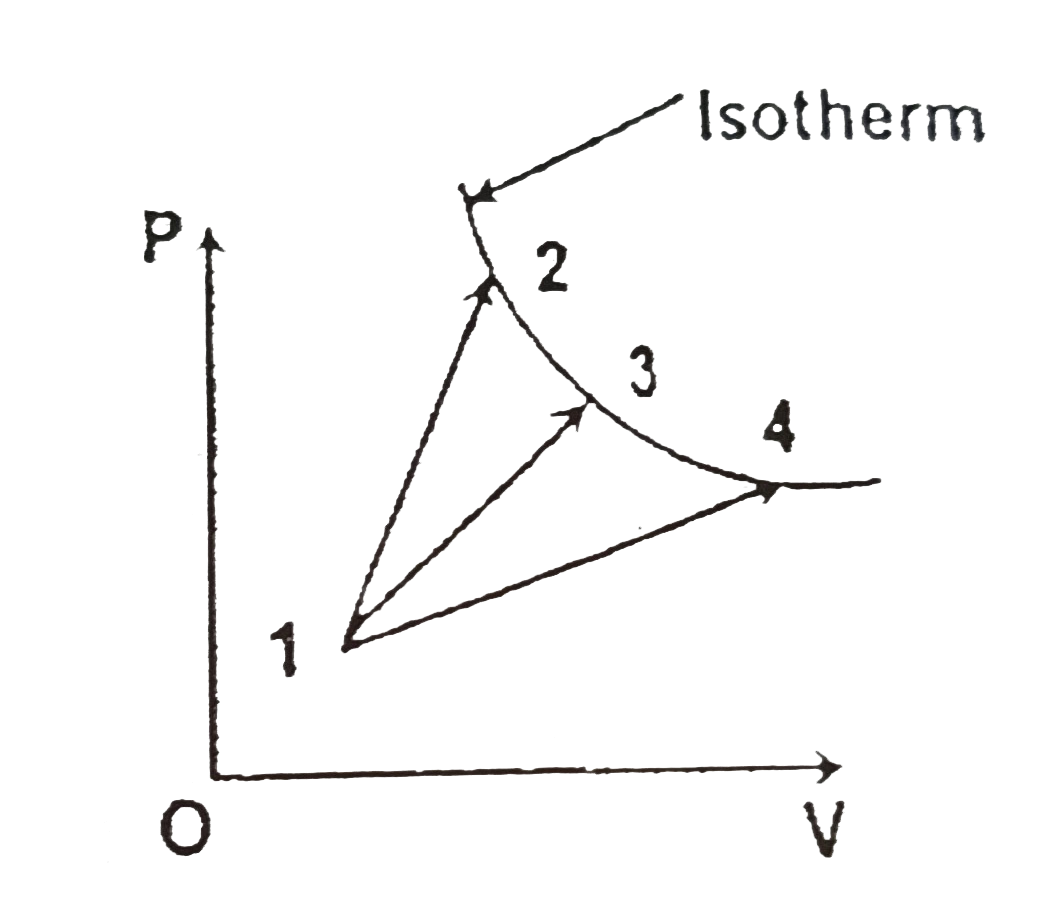
Q3>Q2
Q1<Q2
Q3>Q1
Q3>Q2>Q1
Step by step video & image solution for A gas took part in three thermal processes in which it is heated from the same initial state to the same final temperature. The process are shown in the P-V diagram by straight lines 1-2, 1-3 and 1-4. Q_(1), Q_(2) and Q_(3) are amount of heat supplied to the gas in the process 1 to 2, 1 to 3, 1 to 4. respectively. by Physics experts to help you in doubts & scoring excellent marks in Class 12 exams.
Updated on:21/07/2023Similar Questions
A gas take part in two thermal processes in which it is heated from the same initial state to the same final temperature. The processes are shown on the P−V diagram by straight lines 1→3 and 1→2
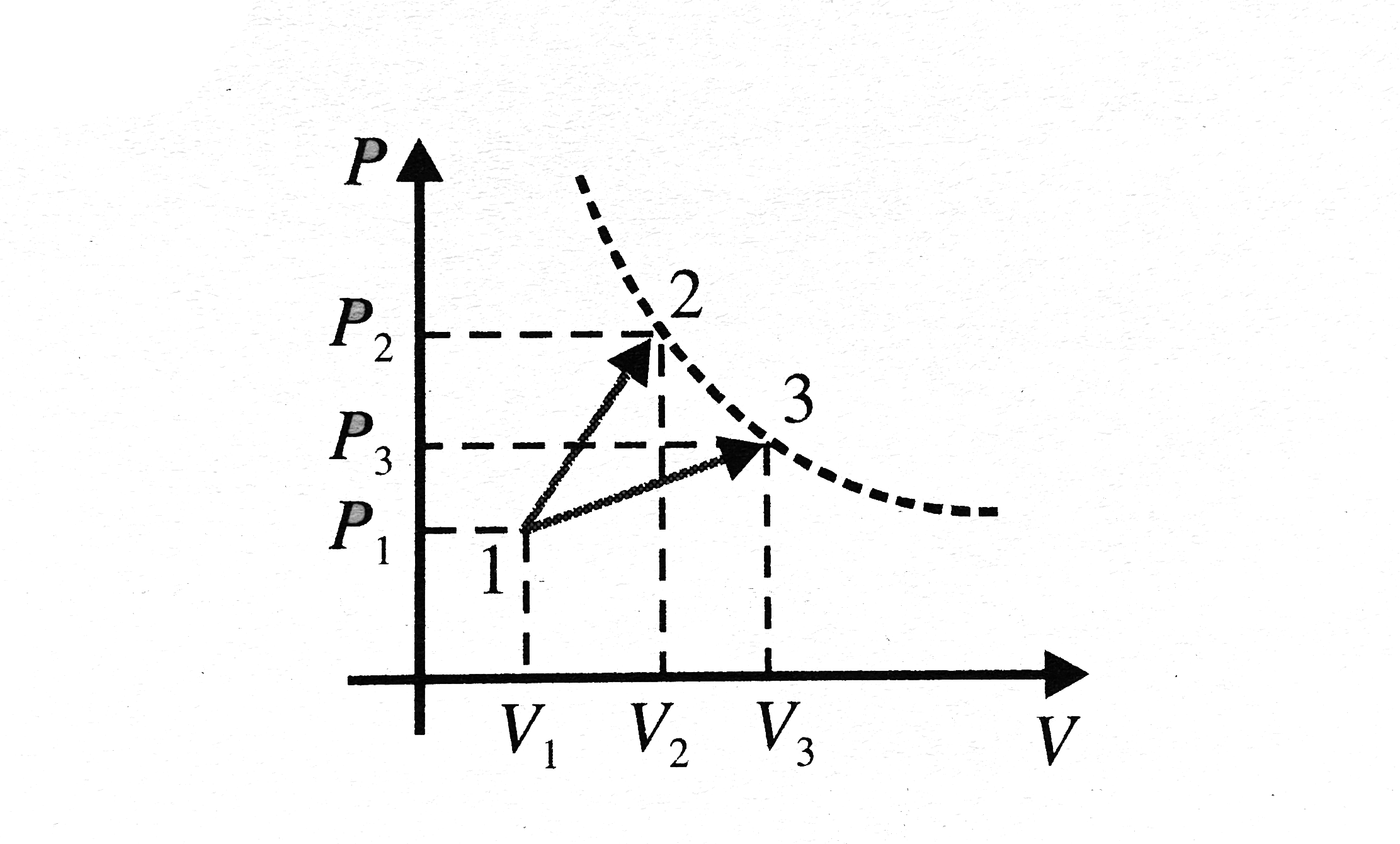
View SolutionA gas take part in two thermal processes in which it is heated from the same initial state to the same final temperature. The processes are shown on the P−V diagram by straight lines 1→3 and 1→2
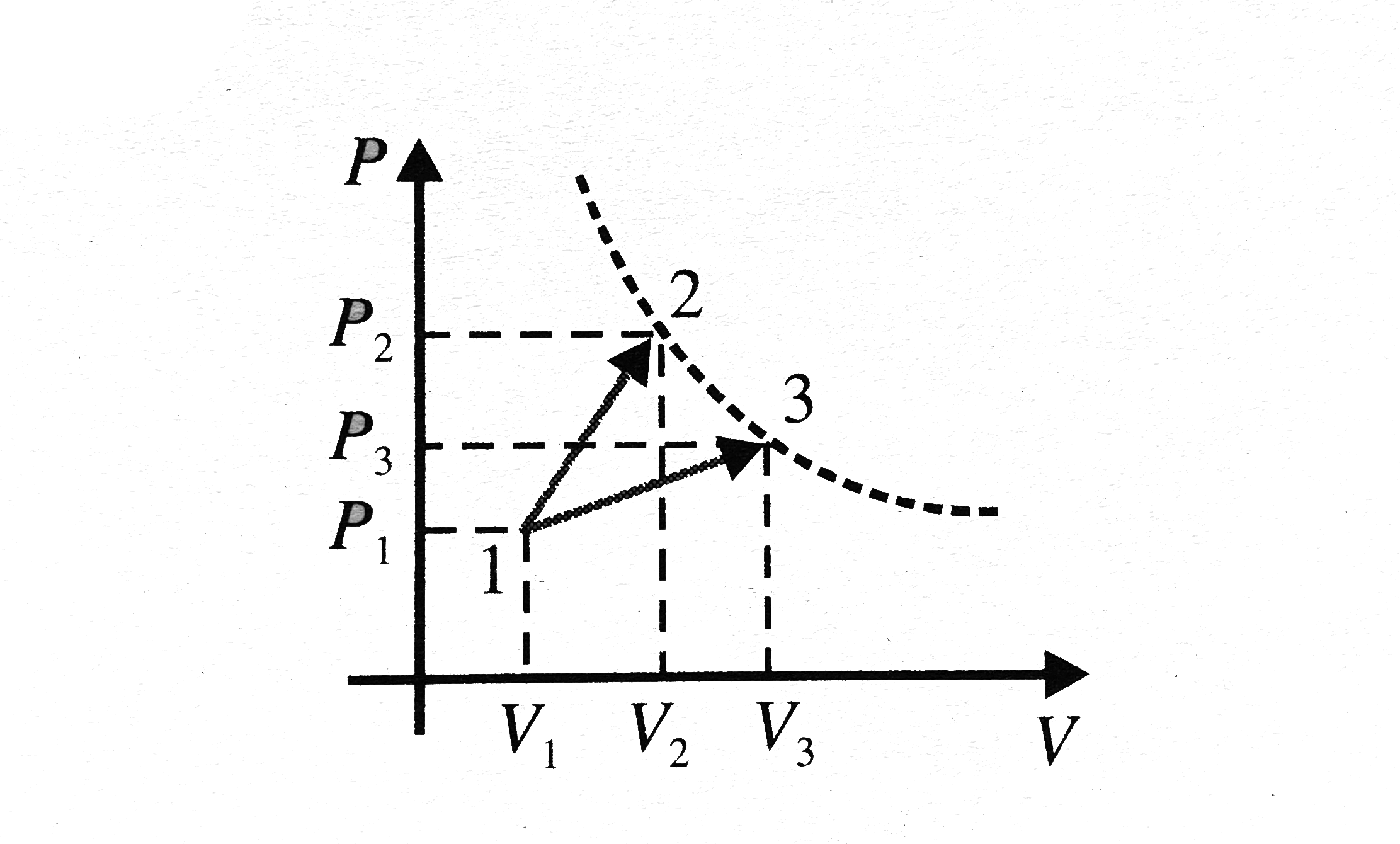
View Solution
Knowledge Check
An ideal gas undergoes for different processes from the same initial state (figure). Four processes are adiabatic, isothermal, isobaric and isochoric. Out of 1, 2, 3 and 4 which one is adiabatic ?
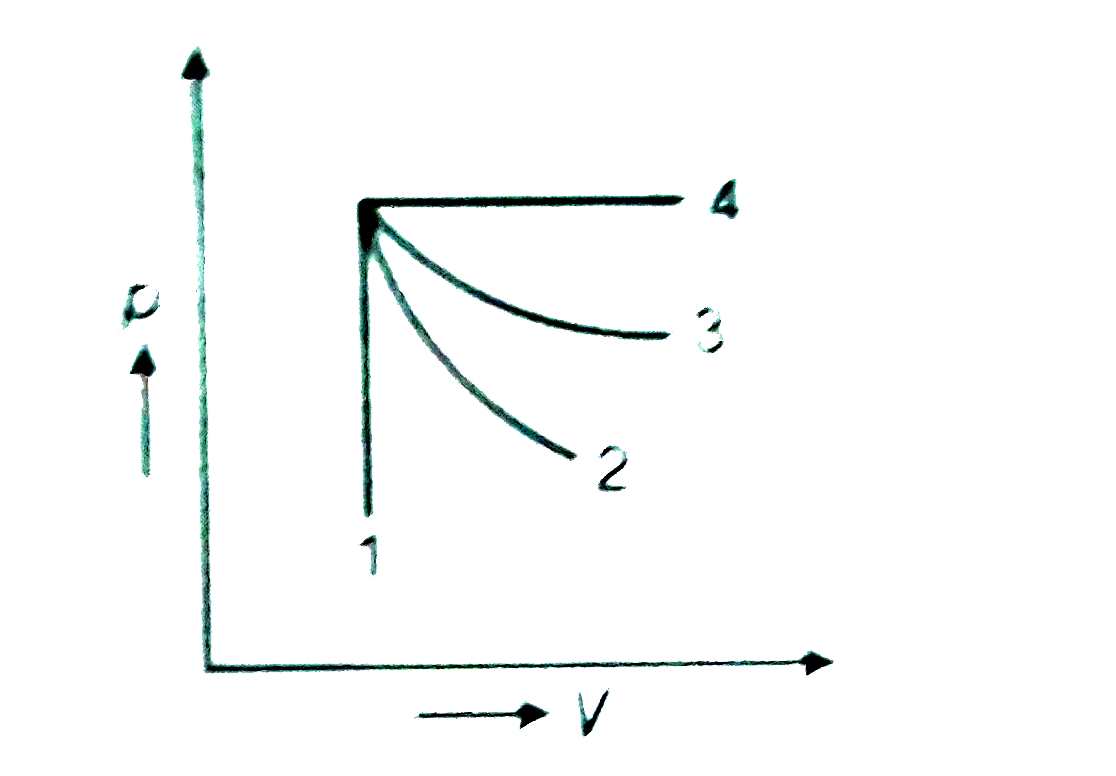 A4B3C2D1
A4B3C2D1
A gas takes part in two processes in which it is heated from the same initial state 1 to the same final temperature. The processes are shown on the p-V diagram by the straight lines 1-3 and 1-2. 2 and 3 are the points on the same isothermal curve. Q1 and Q2 are the heat transfer along the two processes. Then,
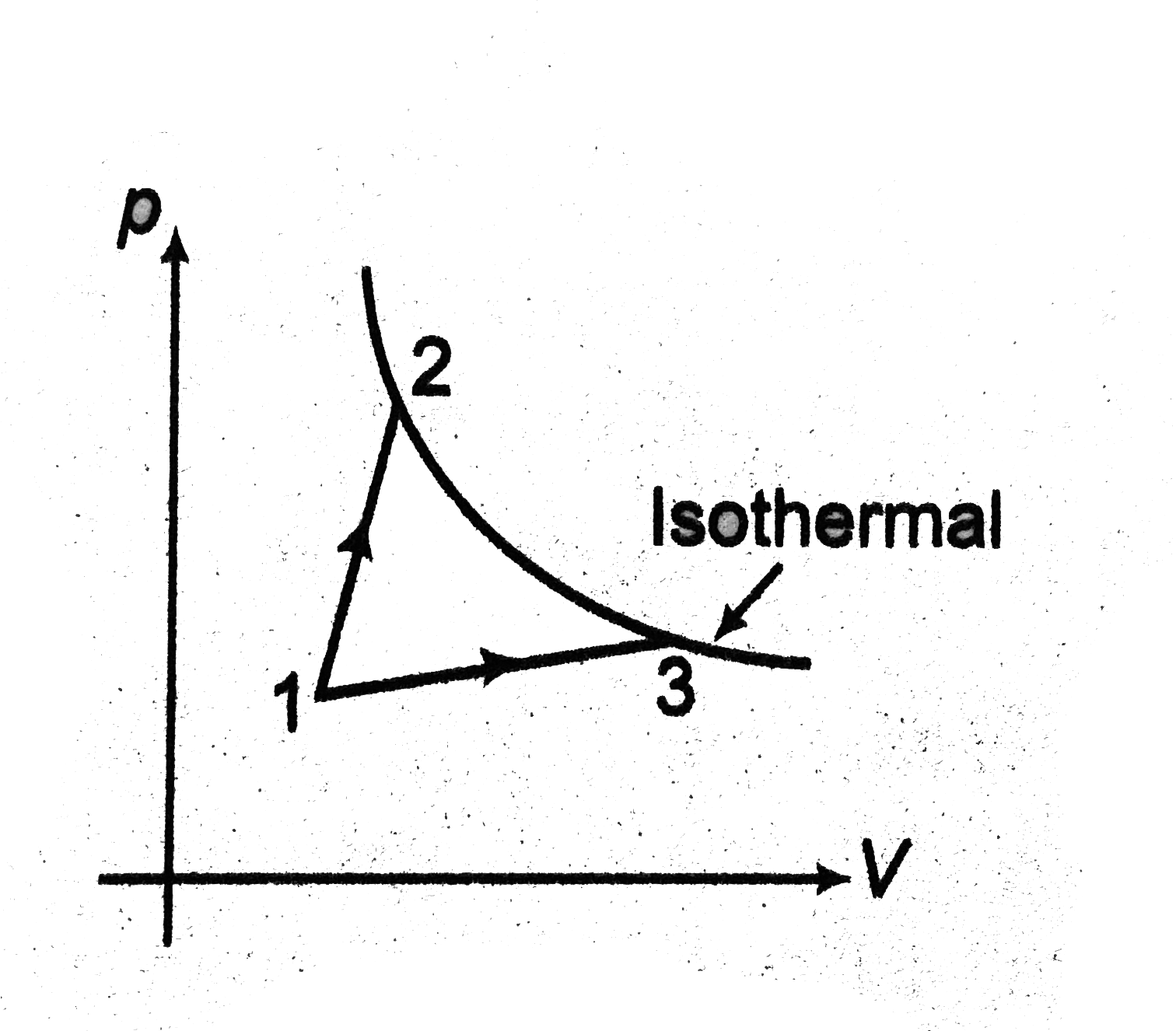
View SolutionConsider two processes on a system as shown in figure.
The volumes in the initial states are the same in the two processes and the volume in the final states are also the same.Let ΔW1 and ΔW2 be the work done by the system in the processes A and B respectively.
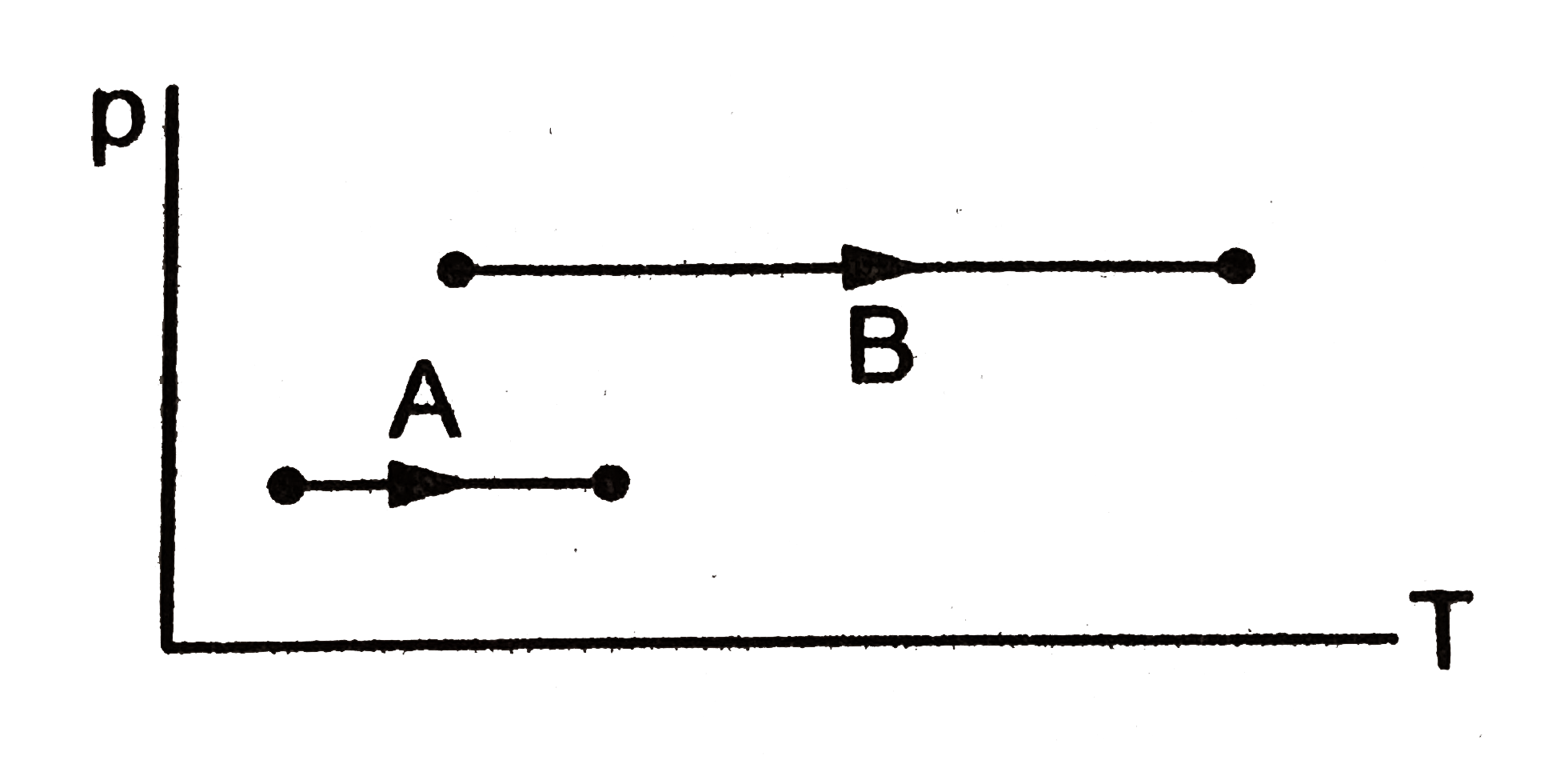
View SolutionConsider two processes on a system as shown in figure.
The volumes in the initial states are the same in the two processes and the volume in the final states are also the same.Let ΔW1 and ΔW2 be the work done by the system in the processes A and B respectively.

View SolutionAn ideal gas of mass m in a state A goes to another state B via three different processes as shown in Fig. If Q1,Q2 and Q3 denote the heat absorbed by the gas along the three paths, then
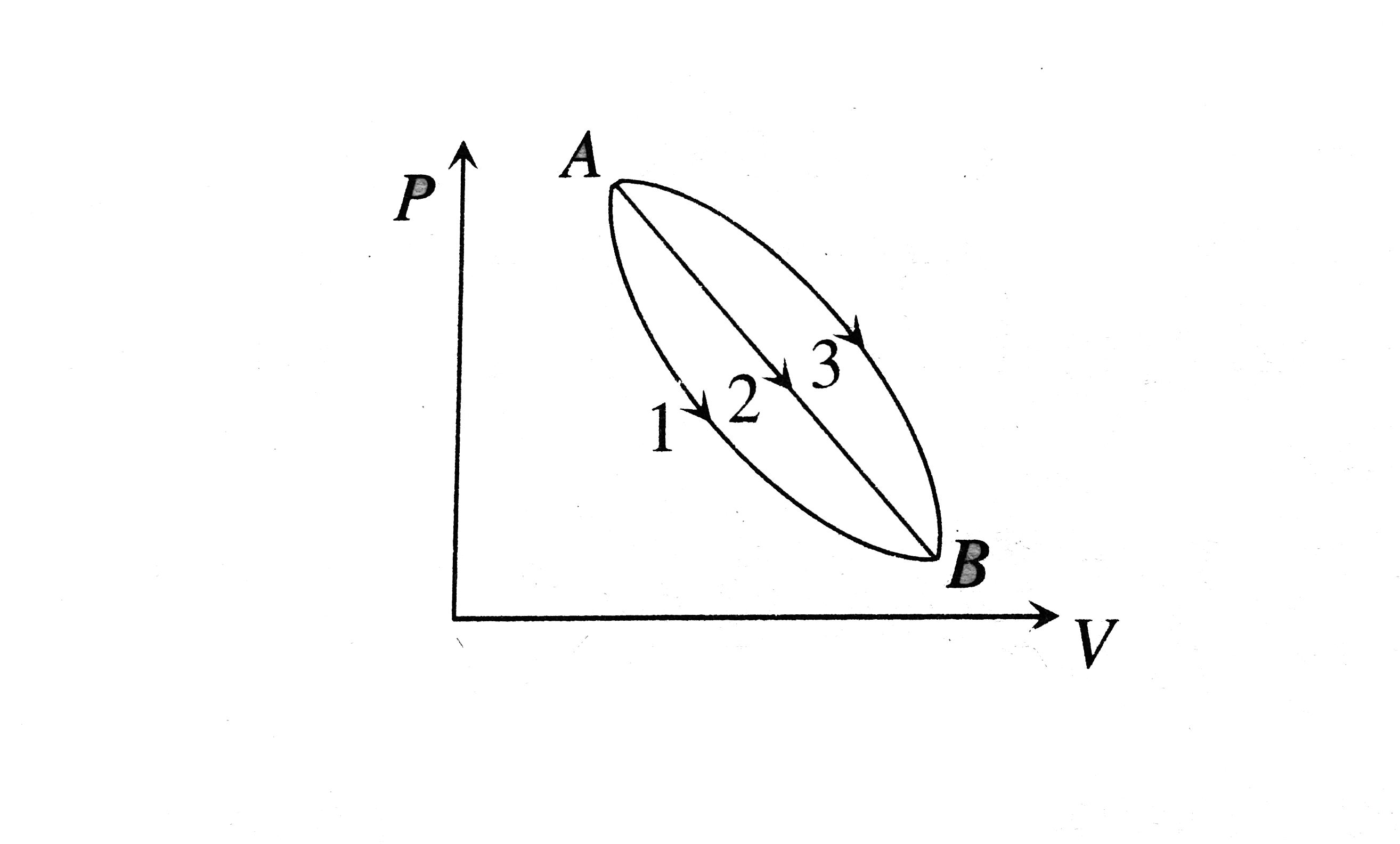
View SolutionAn ideal gas goes from state A to state B via three different processes as indicated in the P-V diagram -
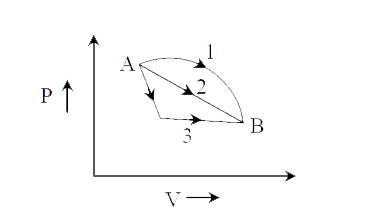
If Q1,Q2,Q3 indicate the heat absorbed by the gas along the three process and ΔU1,ΔU2,ΔU3, indicate the change in internal energy along the three processes respectively, then -
View SolutionAn ideal gas undergoes for different processes from the same initial state (figure). Four processes are adiabatic, isothermal, isobaric and isochoric. Out of 1, 2, 3 and 4 which one is adiabatic ?

View SolutionAn ideal gas (γ=1.5) undergoes a thermodynamic process in which the temperature and pressure of the gas are related as T−1P2= constant. The molar heat capacity of the gas during the process is
View Solution
